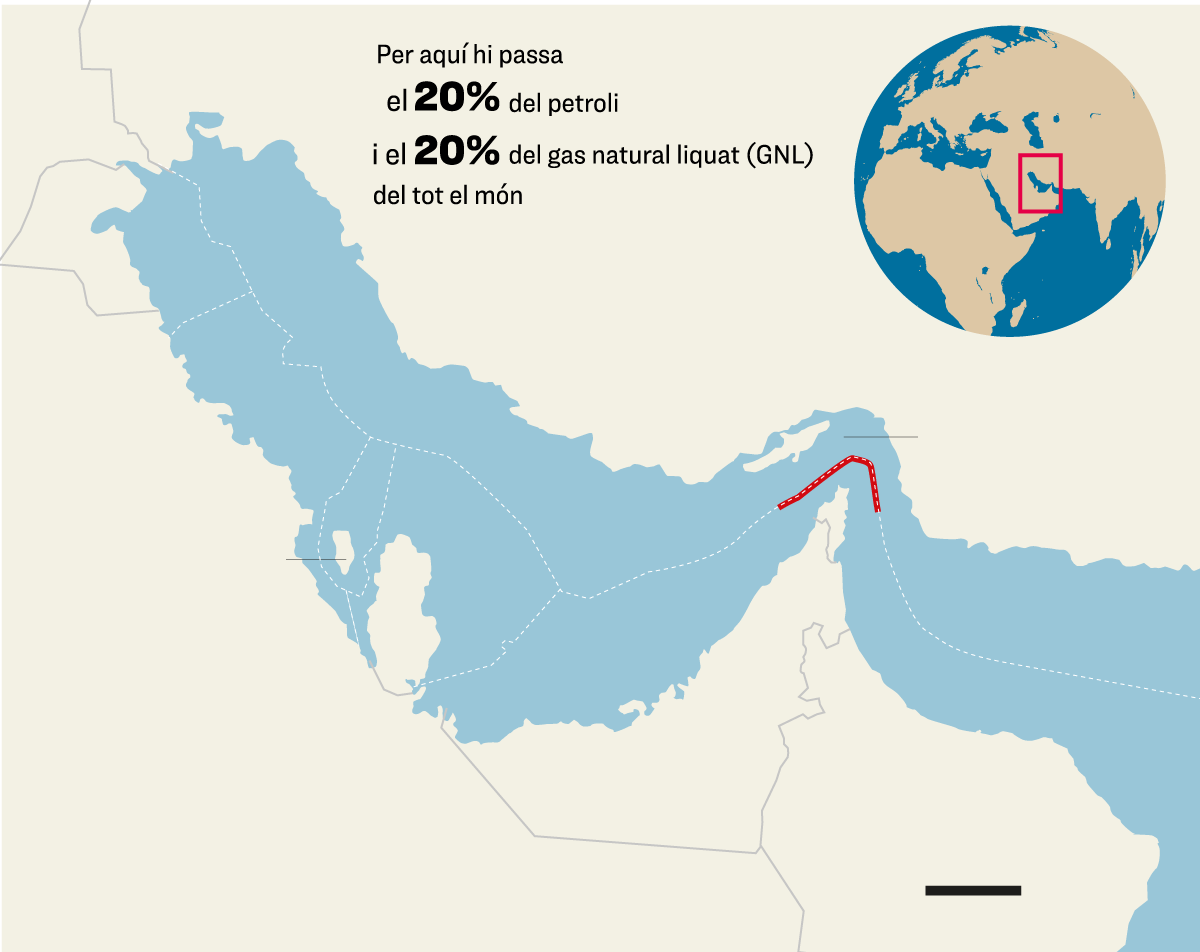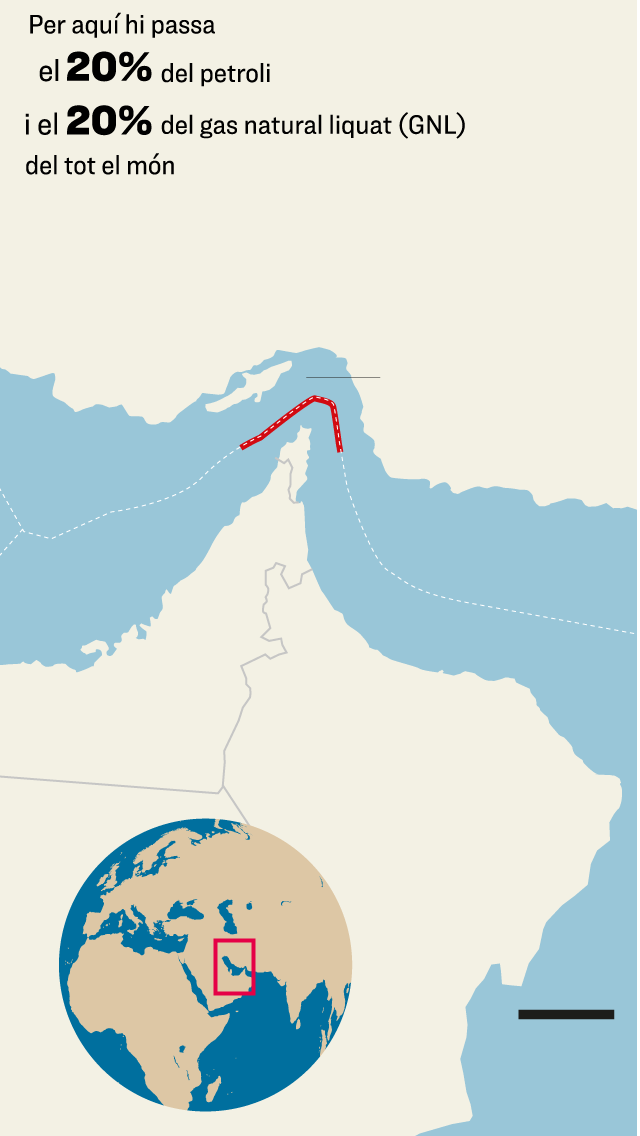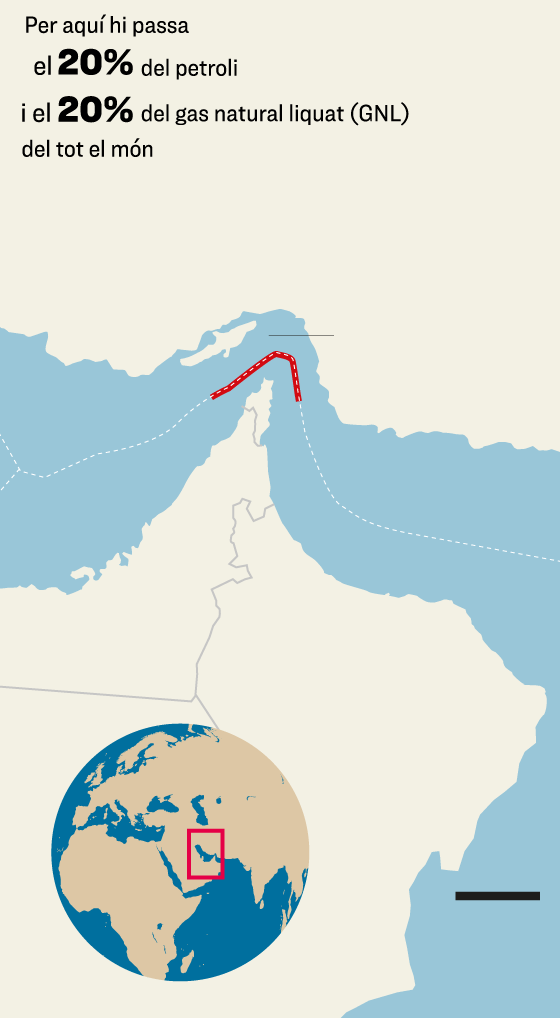Blockage of the Strait of Hormuz: What consequences could it have for the global economy?
Between a fifth and a quarter of the world's oil and a good part of its gas flow through the Persian Gulf.

BarcelonaStock markets are on tenterhooks this Monday. The Iranian Parliament's approval of the closure of the Strait of Hormuz—an initiative that must be ratified by the Supreme National Security Council—could be a real shock to the global economy. This passage has a maximum width of 96 kilometers and a minimum of 52, with Iran in the north and the United Arab Emirates (UAE) and Oman in the south. Between a fifth and a quarter of all the world's oil passes through it, between 17 and 20 million barrels per day. But such a closure would not only impact crude oil. Liquefied natural gas (LNG) could also be affected. Qatar, its main global exporter, transports almost all of its production through this strait.
Given the importance of these fossil fuels, the International Monetary Fund (IMF) has already warned of the effects of the US attack on Iran and has not ruled out having to revise downwards the updated growth forecasts it will present next month. This Monday, the IMF's managing director, Kristalina Georgieva, warned in an interview on Bloomberg TV. In her view, the current situation represents "another source of uncertainty" in a context where that feeling already prevails. Supply difficulties would be added to the trade war initiated by the US.
Along similar lines, European Central Bank (ECB) President Christine Lagarde warned in an appearance before the European Parliament that risks to eurozone economic growth "remain tilted to the downside" due to global trade and geopolitical tensions, although increased defense spending could boost activity.
The most significant impact, in the event of a blockade of the Strait of Hormuz, would be a rise in the price of oil and gas. In fact, this increase is already occurring, and the impact is felt in two ways: on the one hand, a rise in inflation and, on the other, a slowdown in economic growth through increased production costs, reduced consumption, and a deterioration in the trade balance as crude imports become more expensive. The price of a barrel of Brent crude, the benchmark in Europe, reached $81.40, a 5.7% increase, reaching its highest level since January. However, before the opening of European stock markets, the price moderated its rise to $78.26 and plummeted to $73 in a day of high volatility awaiting events following the Iran attack on US bases in the Gulf of Mexico.
From 110 to 150 dollars
Investors are therefore still waiting for Iran's response: if the blockade goes ahead, Brent could reach $120 in the short term and $150 in the long term, analysts estimate. Goldman Sachs states in its latest report that Brent could climb to $110 a barrel if oil flows through the Strait of Hormuz were to halve for one month and fall by a further 10% over the following 11 months. Other specialists estimate the increase to $15.
Furthermore, this effect is reflected in the prices of fuel, gasoline, and diesel. This Monday in Barcelona, a liter of gasoline ranged from €1.359 at the cheapest station to €1.669 at the most expensive, while diesel was between €1.279 and €1.599. The electrification of the economy is not yet having much impact on avoiding declines in economic activity.
The effects of the closure of this strategic passage through the Persian Gulf are even more negative for countries such as China, India, Japan, and South Korea, as they receive most of their oil and gas through this strait. Saudi Arabia, Iraq, and the United Arab Emirates—which were China's main suppliers in 2024—send a large portion of their fuel through this passage. Given the current situation, the major stock indices are also on the fence. The Ibex 35 and the rest of the European stock markets have held up. After a session mixed with positive and negative results, the Ibex closed with a slight loss of 0.08%, to 13,839.400 points.



